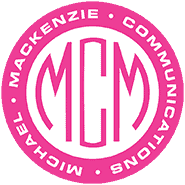In the past few years, business leaders in nearly every industry have been “on the ropes.” Like a boxer trying to prevent a knock-out, they have been working with people on the sidelines to figure out their next play.
The reality is that bad things happen to nearly every firm, but how they respond to them can determine whether the situation is controlled — or it spirals out of control. A quick glance at historical headlines confirms this.
- In 2017, consumer reporting giant Equifax became aware of a data breach that affected 143 million Americans. Social security numbers, birth dates and addresses were among the data points stolen in this grand-scale cyberattack. That’s terrible news, but what made it even worse was that Equifax concealed the breach for six full weeks — denying their customers the opportunity to take time-sensitive steps to protect themselves from identity theft.
Equifax’s lack of transparency resulted in a congressional inquiry into the matter and led to a settlement with the Federal Trade Commission of up to $425 million to help protect impacted consumers.
- In February 2022, California’s Department of Fair Employment and Housing (DFEH) sued auto manufacturer Tesla, alleging the firm had discriminated against black workers and ignored years of complaints that they were almost continuously subjected to racist slurs in the workplace.
Although Tesla denied these allegations, the fact that a court had previously ordered the firm to pay $137 million to a black contract worker after his complaints of a “hostile work environment” were ignored does not create what we in marketing call “great optics.” (Making matters worse, seven women have sued the company over alleged workplace harassment.) And then, of course, there are the problems with the cars themselves.
- In April 2022, a former Goldman Sachs executive who had been tied to a scandal over leaked Fed documents was barred from banking. It’s hard to imagine a worse fate for an executive in a leading global investment banking, securities and investment management firm. Goldman Sachs paid $86.3 million in penalties after the episode.
There are endless stories like this, of organizations and their leaders who made a bad situation worse by trying to cover it up, spin it differently or evade reality. That’s somewhat understandable. No one wants bad press to mar their public image and draw attention away from the services their firm provides.
Yet, understandable doesn’t mean acceptable. Firms of all sizes, large and small, can have their reputations sullied — or ruined — by trying to deceive their customers or the public at large, not to mention regulators, law enforcement, their business partners and others who trust them
To use the now-famous expression that came out of former President Nixon’s illegal behavior, “It’s not the crime. It’s the cover up.”
Riding Out the Storm
Facing the tempest head on is the only way to ensure your organization emerges stronger — or at least, smarter — than you were before. Following are a few pointers to help your firm do just that.
Use Honesty and Transparency to Influence the PR Narrative
If trouble is brewing internally, you may be tempted to “bury the story.” Or, your leadership team may hope the problem will go away on its own, allowing the firm to avoid negative press. That’s human nature, but it’s simply not going to work. The truth almost always comes out, and when it does, your company may not only lose significant credibility; it may land itself in legal jeopardy.
Replace a Generic PR Statement with a Sincere Apology
Have anyone ever apologized to you by saying “I’m sorry you feel that way?” Such an apology implies the offended party might be the problem. Generic PR statements can come across this way. If a firm is avoiding responsibility by declining to admit its mistake, customers/clients and other stakeholders may be doubly offended.
If appropriate, perform outreach to the offended parties and ask for their input. Either way, issue an authentic apology. No one will be fooled if you hide behind a bland PR statement, and you may alienate your clients or customers even more.
One good example of what NOT to do was the incident where United Airlines staffed dragged a passenger off a flight because they were overbooked. (Not familiar with it? You can view it here.) United Airlines official statement — issued via Twitter — was just insulting. It concluded with the words, “Further details on the removed customer should be directed to authorities.” Seriously?
Don’t Remain Mute
“Radio silence” is just as bad. It makes you seem nonchalant about the transgression and/or unwilling to admit an error. Depending on the severity of the situation, you may need to develop a full communications plan. At the minimum, you need some type of plan.
In the Equifax case, the firm offered complimentary data protection and compensation to customers, while also taking meaningful cybersecurity changes. It was late, but it was better than nothing.
As a final thought, if you develop a communication plan, ensure any public or customer communication sounds contrite. Don’t portray yourself as “benefactor” for giving the injured parties what they rightly deserve.
Develop a Plan and a Protocol to Help Ensure It Never Happens Again
This last element is easy to skirt once the firm and its leaders feel that things are “back on track.” Nothing could be further from the truth. Michael Mackenzie’s Media Specialist (an expert at optics) recently penned a blog about developing an advance plan that will help firms avoid such debacles in the future. You can read it, here.
This post is courtesy of MMC Content Manager Jennifer Farwell.



